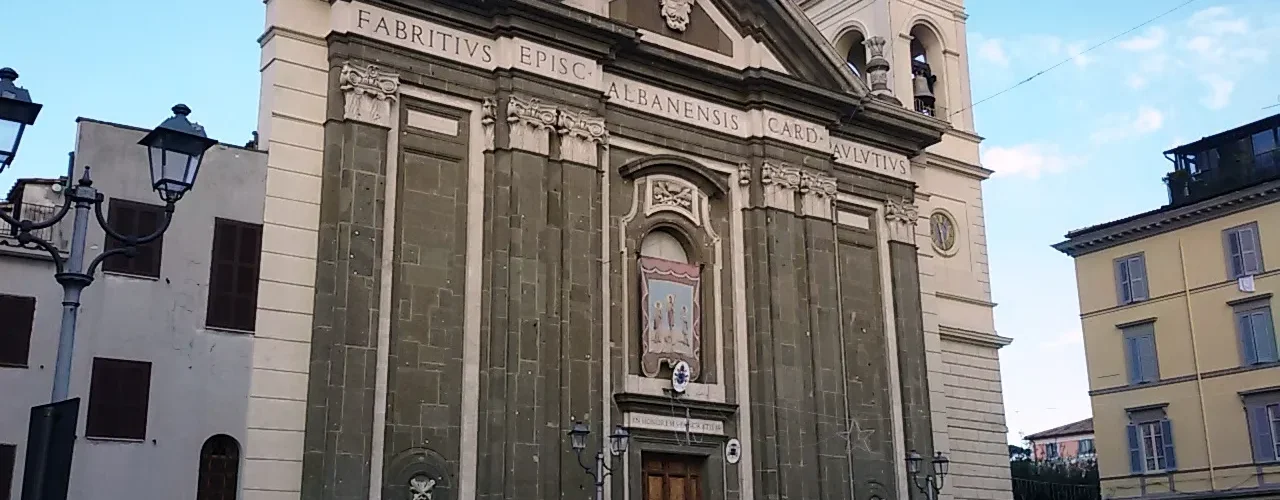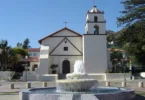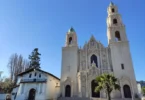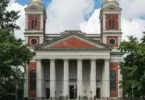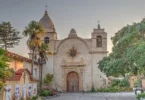Introduction
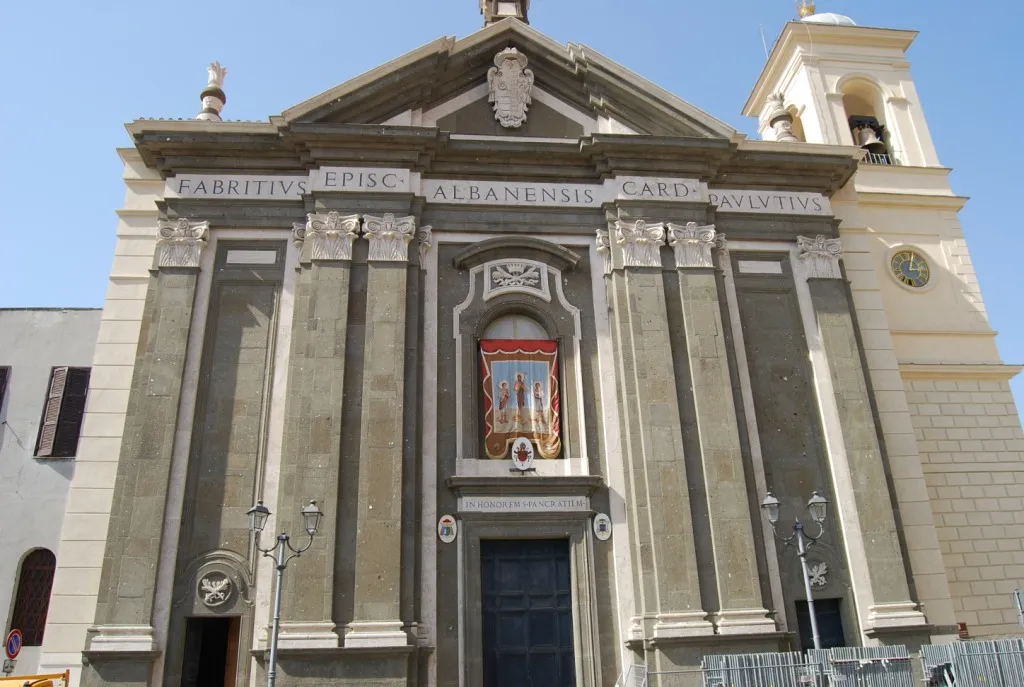
The Cathedral of San Pancrazio, also known as the Duomo di Albano or Cattedrale di San Pancrazio, is a prominent Roman Catholic cathedral located in the city of Albano Laziale, within the province of Rome in the Lazio region of Italy. It serves as the principal church of the Suburbicarian Diocese of Albano, an ecclesiastical jurisdiction that includes a number of communities in the surrounding area. This cathedral has a long and storied history, with its origins dating back to the early Christian period. The present structure, which was consecrated in 1721, stands on the site of an earlier basilica dedicated to Saint John the Baptist, originally founded by Emperor Constantine the Great in the 4th century. Over the centuries, the cathedral underwent various modifications and reconstructions. In the 9th century, Pope Leo III made significant changes to the church, including rebuilding it and changing the dedication from Saint John the Baptist to Saint Pancras, the patron saint of the cathedral, a title it retains to this day.
As the main religious center in Albano Laziale, the Cathedral of San Pancrazio holds immense significance for the local community. It is not only the mother church of the Diocese of Albano but also an important spiritual and historical landmark in the Castelli Romani area, renowned for its connection to Rome’s ecclesiastical and cultural heritage. In recognition of its importance, Pope Pius IX elevated the church to the dignity of a minor basilica in September 1865, affirming its status as a key place of worship and pilgrimage in the region.
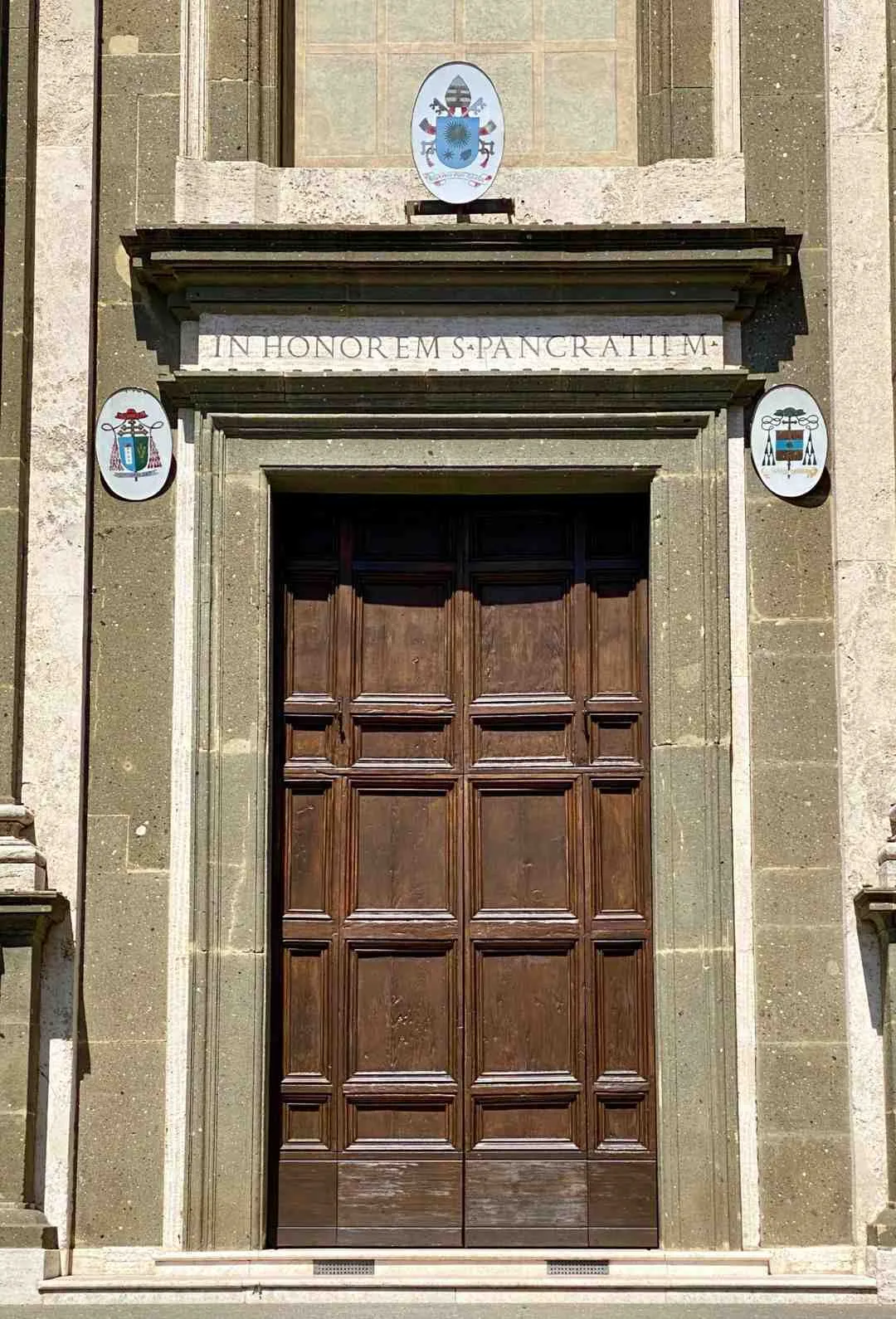
The Foundation and Early Christian Presence
Christianity was likely introduced to the Alban and Tusculan territories by Saint Peter and Saint Paul of Tarsus, though the earliest Christian traces in Albano are notably ancient. Significant remnants of early Christian activity include the Catacombs of San Senatore near Santa Maria della Stella in Albano Laziale. Dating back to the 4th or 5th century, these catacombs remained in use until the 9th century. Additionally, a Christian oratory has been discovered inside the remains of a Roman villa at Villa Doria-Pamphilj, along with another Christian oratory found in the “vomitoria” of the Roman amphitheater in via San Francesco d’Assisi. The first documented mention of a cathedral in Albano is found in the Liber Pontificalis, which refers to Emperor Constantine I (306–337) and Pope Sylvester I (314–335). The text mentions the construction of a basilica dedicated to Saint John the Baptist in Albano:
“At the same time Constantine Augustus built a basilica in the city of Albano, dedicated to St. John the Baptist…”
Further donations of land to the Albanese cathedral by Constantine are also recorded, marking the beginning of the cathedral’s association with important locations like Lake Albano and towns such as Marino and Nemi, which are mentioned for the first time in the historical record. The Liber Pontificalis also alludes to another basilica built by Pope Hormisdas (514–523) in the area of Mefontis, though it is believed that this basilica is not the cathedral but rather the Church of San Pietro, the oldest religious structure in Albano, partly constructed from the Baths of Caracalla.
From the Middle Ages to the 16th Century
During the Middle Ages, the cathedral fell into disrepair, and Pope Leo III (795–816) oversaw its restoration after it had suffered significant damage due to age and a fire. The church had become increasingly dilapidated, and Leo III took measures to restore and refurbish it. Tradition holds that by the time of Saint Francis of Assisi, a Franciscan guardian was established in Albano on land granted by Pope Honorius III, and the Franciscan friars were tasked with the care of the cathedral.
By 1560, Cardinal Giovanni Gerolamo Morone confirmed the responsibility of the Conventual Franciscans to manage the cathedral. However, the cathedral continued to face challenges such as insufficient clergy and a lack of resources. In the late 16th century, Cardinal Michele Bonelli (1591–1598) visited Albano and recognized the dire condition of the cathedral. He made substantial contributions to the restoration, including securing lost privileges for the diocesan Curia and reorganizing the parishes within Albano, thereby ensuring the cathedral’s survival and relevance.
The Seventeenth and Eighteenth Centuries
In the 17th century, Cardinal Flavio Chigi (1687) contributed to the cathedral’s renewal by financing the construction of the sacristy and reorganizing the cemetery, which was previously situated under the church’s floor. This change marked the cessation of the long-standing tradition of burying the dead within the church itself. The current appearance of the cathedral’s façade and its comprehensive renovation can be attributed to Cardinal Ferdinando d’Adda, who began the restoration process at the start of the 18th century. Though Cardinal d’Adda passed away in 1719, his successor, Cardinal Fabrizio Paolucci, continued the project and brought in architect Carlo Buratti to complete the work. The cathedral was reconsecrated in 1720, with its anniversary set for August 30th each year. During this time, Cardinal Nicolò Maria Lercari also made significant contributions to the cathedral’s infrastructure, including the donation of his palace in Albano to the diocesan Curia in 1757.
The 19th to 21st Centuries
The political upheaval of the Roman Republic (1798-1799) saw Albano Laziale become a “twinned republic.” Despite the republic’s secular nature, its leaders were concerned with maintaining the state of the cathedral, and by 1798, they had already started restoration efforts. However, these were delayed due to various financial and administrative challenges. In the 19th century, the cathedral underwent several more restorations, including a major one following a series of earthquakes in 1829. A miraculous event in the aftermath, attributed to the Madonna della Rotonda—a Marian image preserved in a local sanctuary—led to celebrations, including the coronation of the image in the cathedral. Further restoration work was undertaken in 1854-1858 and 1912-1913, and some remains of the early Constantinian basilica were uncovered.
The cathedral also played an important role during the papacy of Pope Paul VI, who visited Albano in 1963, and later during the papacy of Pope John Paul II, who visited in 1982. In 2008, Pope Benedict XVI consecrated a new high altar in the cathedral during his pastoral visit to Albano, further cementing the cathedral’s significance in the spiritual life of the area.
The 21st Century
The 21st century continued to see significant visits by popes to the cathedral. On September 21, 2008, Pope Benedict XVI visited Albano and consecrated the newly installed high altar. Pope Francis followed in his footsteps on September 21, 2019, celebrating Mass in Piazza Pia, making a memorable visit to the town and its cathedral.
Architecture of Cathedral of San Pancrazio, Albano Laziale, Italy
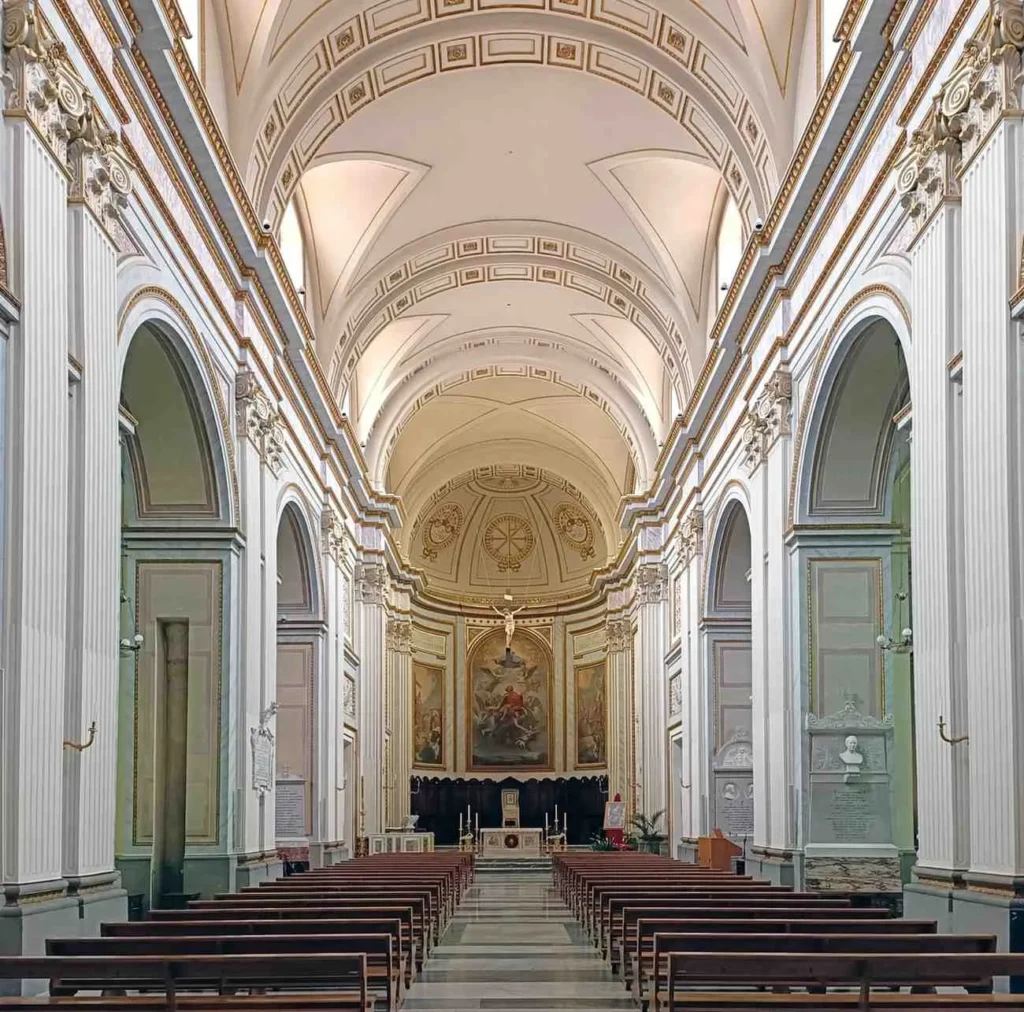
Architectural Styles: Baroque architecture, Rococo architecture.
Description of the Cathedral of Albano Laziale
External Features
The Cathedral of Albano Laziale boasts a grand facade, completed in 1722, designed by the renowned architect Carlo Buratti. Buratti, known for his other notable works such as the aqueducts of Bracciano and Benevento, the cathedral of San Paolo in Aversa, and the church of Santa Maria del Suffragio in L’Aquila, also contributed significantly to this magnificent structure. Constructed from local peperino stone, the facade is divided into three sections by large pilasters in the giant architectural order. The central portion features a tympanum crowned by an imposing cross, with a marble coat of arms of Fabrizio Paolucci, the Cardinal Bishop of Albano, at its center. The torches at each end likely represent the descent of the Holy Spirit, a common motif in church facades. Below the tympanum, the architrave bears an inscription commemorating Paolucci’s contribution to the church:
English:
“Fabrizio Paolucci Cardinal Bishop of Albano”
A blind window, designed to resemble the “loggia of blessings” found in Roman papal basilicas, is the central feature of the facade. Above this window is a frieze depicting the palm of martyrdom, symbolizing Saint Pancras, a Christian martyr. The facade also features three doors, with round friezes above the two side doors, each illustrating the palm of martyrdom, representing the reverence of saints.
Internal Features
The interior of the cathedral preserves its late Baroque style, though later neoclassical interventions from the mid-19th century to the 1910s have significantly shaped its current appearance. The church follows a basilica plan with three naves, each covered by barrel vaults. Six lateral chapels line the sides of the church, housing paintings from the 17th and 18th centuries, enhancing its artistic and historical richness.
Dominating the counter-facade is a large choir, which supports an inactive pipe organ. Above the choir, a commemorative plaque honors Cardinal Bishop Ferdinando d’Adda and his efforts to restore the cathedral, with the restoration ultimately completed by his successor, Cardinal Paolucci, after d’Adda’s death in 1719. The plaque reads:
English:
“Ferdinando, Bishop of Albano, Cardinal of the Holy Roman Church, started the restoration of this cathedral, which had been deteriorating due to age, from its foundations. His efforts were interrupted by an untimely death. The work was completed as per his will in the year 1719 by his successor, Cardinal Fabrizio Paolucci, who dedicated this monument with gratitude.”
A notable historical artifact near the baptismal font is a copy of the chirograph by Pope Paschal II from 1118, which granted tax exemptions to the Albanian people, demonstrating the pope’s benevolence toward the region.
Crypt and Architectural Preservation
The cathedral’s crypt, located beneath the presbytery, houses some of the Ionic capitals that date back to the ancient early Christian basilica. These capitals were part of the structure rebuilt by Pope Leo III between 795 and 815 after a devastating fire. Over the centuries, the church underwent various modifications, including the addition of a sacristy and a small cemetery. In 1772, Cardinal Fabrizio Paolucci commissioned the construction of the current facade, designed by Carlo Buratti. The church’s current appearance was largely finalized by 1913, following more than fifty years of continuous restoration work, which received significant financial support from the local population. As a result of these efforts, many columns from the medieval cathedral built by Pope Leo III were exposed, enhancing the historical richness of the church. Additionally, the church was officially rededicated to both St. John the Baptist and St. Pancras, the patrons of the city of Albano.
Notable Artifacts and Features
The cathedral houses a valuable early Christian marble sarcophagus that features a central figure of a praying man, providing further insight into the religious and artistic heritage of the church. Beneath the third arch, located between the central nave and the left side nave, is a mechanical organ built by Claudio Anselmi Tamburini in 1992. The organ was moved to its current location in 2020, adding a contemporary element to the historic interior of the cathedral.
Feast Day
Feast Day: 12 May
The Feast of St. Pancras, celebrated in the Cathedral of San Pancrazio in Albano Laziale, Italy, is observed on May 12th each year. This date honors St. Pancras, a Christian martyr, whose feast day is widely recognized in the liturgical calendar.
Church Mass Timing
Monday : 8:30 AM , 6:00 PM
Tuesday : 8:30 AM , 6:00 PM
Wednesday : 8:30 AM , 6:00 PM
Thursday : 8:30 AM , 6:00 PM
Friday : 8:30 AM , 6:00 PM
Sunday : 9:00 AM , 10:30 AM , 12:00 PM , 6:00 PM
Church Opening Time:
Monday : 7:45 am – 12:00 pm, 4:00 pm –8:00 pm
Tuesday : 7:45 am – 12:00 pm, 4:00 pm –8:00 pm
Wednesday : 7:45 am – 12:00 pm, 4:00 pm –8:00 pm
Thursday : 7:45 am – 12:00 pm, 4:00 pm –8:00 pm
Friday : 7:45 am – 12:00 pm, 4:00 pm –8:00 pm
Saturday : 7:45 am – 12:00 pm, 4:00 pm –8:00 pm
Sunday : 7:45 am – 12:00 pm, 4:00 pm –8:00 pm
Contact Info
Address :
Piazza Pia, 28, 00041 Albano Laziale RM, Italy.
Phone : +39 327 118 5079
Accommodations
Connectivities
Airway
Cathedral of San Pancrazio, Albano Laziale, Italy, to Leonardo da Vinci International Airport (FCO) Fiumicino distance between 28 min (24.1 km) via A91.
Railway
Cathedral of San Pancrazio, Albano Laziale, Italy, to Pavona 00041 Albano Laziale, Railway station distance between 49 min (31.6 km) via A90/E80.

